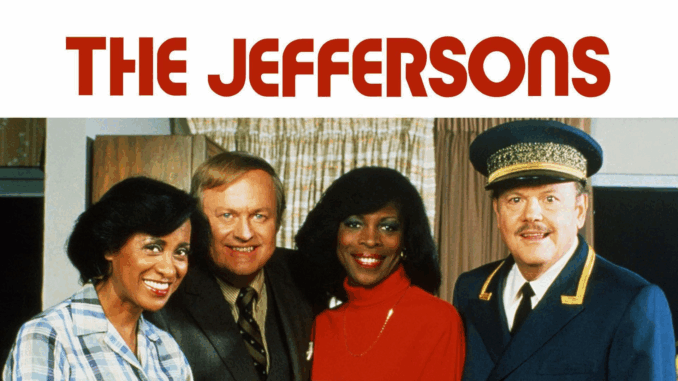
In an era of increasingly fragmented television, where streaming services churn out countless new shows daily, it’s rare for a classic sitcom to not just endure, but to gain new layers of relevance. Yet, The Jeffersons, which originally aired from 1975 to 1985, is doing just that. More than four decades after its debut, the story of George and Louise Jefferson moving from Queens to a deluxe apartment in Manhattan continues to resonate, offering profound insights into race, class, and the American dream that feel strikingly contemporary.
At its core, The Jeffersons was a groundbreaking show. As a spin-off of All in the Family, it broke away from the traditional sitcom mold by centering on an affluent African-American family. George Jefferson, played with bombastic brilliance by Sherman Hemsley, was a self-made entrepreneur, proud and often prejudiced, whose success brought him into uncomfortable proximity with white neighbors and upper-class Black society. Louise “Weezy” Jefferson, portrayed with grace and wisdom by Isabel Sanford, served as his moral compass, often mediating his abrasive nature. This dynamic, set against the backdrop of a changing social landscape, was revolutionary for its time.
Today, the show’s themes feel more pertinent than ever. The discussions around wealth disparity, racial identity within different socioeconomic strata, and the often-fraught interactions between communities are constant fixtures in contemporary discourse. George’s relentless pursuit of success and his complex relationship with his identity as a wealthy Black man – often grappling with imposter syndrome while simultaneously asserting his superiority – offers a nuanced look at upward mobility. He challenges the stereotypes of poverty often associated with Black characters on television, presenting a vision of Black affluence that was rarely seen.
Moreover, the show’s handling of interracial relationships, particularly through the Willis family (half-black, half-white siblings Lionel and Jenny, and their parents Tom and Helen), was pioneering. These characters forced uncomfortable but necessary conversations about prejudice from all sides, including within the Black community. In a society still grappling with racial integration and the complexities of mixed-race identities, these storylines provide a valuable historical lens and mirror current debates.

Beyond its social commentary, The Jeffersons was also simply a very funny show. Its sharp writing, iconic catchphrases (“We’re movin’ on up!”), and the undeniable chemistry between its cast members ensured its entertainment value. Sherman Hemsley’s physical comedy and lightning-fast delivery as George, coupled with Isabel Sanford’s exasperated yet loving reactions, created comedic gold that stands the test of time. Even the quirky elevator operator Ralph and the gossipy maid Florence contributed to a rich ensemble that made the show feel like a true community.
The continued popularity of The Jeffersons on streaming platforms and syndication channels underscores its enduring appeal. New generations are discovering its humor and its surprisingly deep social commentary. In a world that often struggles with open conversations about race and class, The Jeffersons provided a safe, albeit often confrontational, space to explore these issues with humor and heart. Its legacy is not just that of a groundbreaking show for its era, but as a timeless piece of television that continues to help us understand ourselves and the ever-evolving American narrative. The Jeffersons, it seems, are still moving on up, straight into the cultural consciousness of today.
